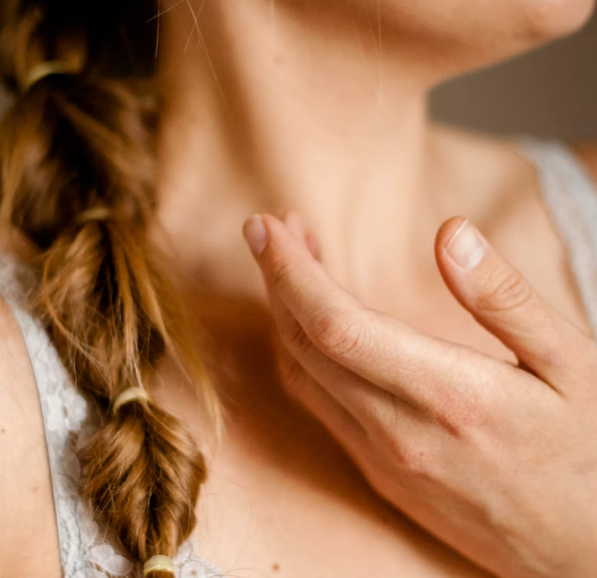Because your neck is a more vulnerable area, these factors can significantly affect the quality of the area, which is why the best way to maintain elasticity is to address these factors as early as possible at the beginning of the aging process.
How to Improve Skin Elasticity

- Apply sunscreen.
- Vitamin C is an antioxidant that protects and promotes collagen growth. It can be taken as a supplement, injected, or applied topically.
- Add retinoids to your daily routine. Retinoids are vitamin A derivatives that regulate the growth of epithelial cells and are closely related to the growth of collagen. Studies have shown that the use of retinoids can improve facial wrinkles, which can produce a firming effect.
- Bakuchiol is a mero terpene extracted from the seeds of the psoralen plant that acts similarly to retinoids on the skin and is usually used in the form of serums. Some people may prefer this option over retinoids because it is less likely to irritate the skin.
- Introduce peptides into your neck skin care routine. Peptides are short-chain amino acids that are known to contribute to protein formation. According to this study, they can help the skin produce collagen and elastin, which naturally improves elasticity.
- There are several medical-grade skin tightening treatments that can safely cause minor damage to the skin using a variety of methods, causing it to produce large amounts of collagen and elastin to repair itself. Some of the most common methods used to produce this controlled injury include different forms of microneedling, laser therapy, and vitamin injection therapy. You can read more about how it works here.
- For preventive purposes, you can also inject cervical botulinum into the latissimus neck band to relieve tension in the neck. When your neckband bends, it causes your skin to stretch over time, which is the ultimate force for forming a “turkey neck.”
Sunlight Damage
According to the Skin Cancer Foundation, sun exposure can wreak havoc on collagen, causing the skin to lose its elasticity, wrinkles and leathery. The skin on the neck is thinner and more delicate than the rest of the body, making it particularly vulnerable to this damage.
To prevent this from happening, it is essential to protect the skin from the sun. No matter where I go or what I do, I wear sunscreen with at least SPF 30 every day to make sure my skin is protected from the sun. If I’m going to spend a day at the beach and know I’ll spend a lot of time exposed to the sun, I raise my SPF and make sure to reapply it several times throughout the day.

You should also try to avoid things like tanning beds, which can cause serious damage in a very short time due to the high intensity of ultraviolet radiation used for rapid tanning. Conversely, if you want a quick tan, opt for a spray tan.
Expressions and Postures
Research provides evidence that excessive facial expressions can lead to the formation of facial wrinkles. For example, if you raise your eyebrows and see wrinkles on your forehead, you may not have wrinkles in the first place. Still, repeated exercise over several years can gradually cause these wrinkles to remain, forming permanent wrinkles. As we age and the loss of collagen in the skin, the formation of wrinkles intensifies.
This is no different for your neck, which means that different movements and postures can lead to the formation of neck wrinkles. While it’s almost impossible to avoid this completely, you can try to be more mindful of your posture and neck position.
- Try to sit up straight, especially if you work at your desk and have a tendency to hunch over.
- Sleep on your back and let the neck and chest relax and level.
Aging is completely normal and a natural and inevitable process. For most people, the main focus to reduce signs of aging is the face. However, there is no discrimination in the aging process.
If you want to maintain an overall youthful appearance, don’t forget to focus on areas closely related to the face, including the neck. By using the above tools for continuous care, you can safely and effectively reduce and prevent the typical signs of aging.
